-
Posts
20,849 -
Joined
-
Last visited
-
Days Won
49
Everything posted by CaaC (John)
-
© Provided by Evening Standard Mysterious bone circles made from the remains of dozens of mammoths have helped shed light on how ancient communities survived Europe's Ice Age. Around 70 of these structures are known to exist in Ukraine and the west Russian Plains. The bones at one site are more than 20,000 years old, a new analysis suggests, making it the oldest such circular structure built by humans discovered in the region. Researchers said the bones were most likely sourced from animal graveyards, and the circle was then hidden by sediment and is now one foot below current surface level. The majority of the bones found at the Russian Plains site are from mammoths. A total of 51 lower jaws and 64 individual mammoth skulls were used to construct the walls of the 30ft by 30ft structure and scattered across its interior. Scientists also found small numbers of reindeer, horse, bear, wolf, red fox and arctic fox bones. For the first time, the archaeologists from the University of Exeter found remains of charred wood and other soft non-woody plant remains within the circular structure near the modern village of Kostenki, about 500km south of Moscow. They say this indicates people were burning wood as well as bones for fuel, and the communities who lived there had learned where to forage for edible plants during the Ice Age. © Provided by Evening Standard A mysterious bone circle made from the remains of dozens of mammoths on the Russian Plains (PA) Dr Alexander Pryor, who led the study, said: "Kostenki 11 represents a rare example of Palaeolithic hunter-gatherers living on in this harsh environment. "What might have brought ancient hunter-gatherers to this site? "One possibility is that the mammoths and humans could have come to the area en masse because it had a natural spring that would have provided unfrozen liquid water throughout the winter - rare in this period of extreme cold. "These finds shed new light on the purpose of these mysterious sites. "Archaeology is showing us more about how our ancestors survived in this desperately cold and hostile environment at the climax of the last Ice Age. "Most other places at similar latitudes in Europe had been abandoned by this time, but these groups had managed to adapt to find food, shelter and water." The last Ice Age, which swept northern Europe between 75-18,000 years ago, reached its coldest and most severe stage at around 23-18,000 years ago. Most communities left the region, probably because of lack of prey to hunt and plant resources they depended upon for survival, scientists say. Bone circles were eventually also abandoned as the climate continued to get colder and more inhospitable. Previously, archaeologists have assumed the circular mammoth bone structures were used as dwellings, but the new study suggests this may not always have been the case. The research, conducted by academics from the University of Exeter, University of Cambridge, Kostenki State Museum Preserve, University of Colorado Boulder and the University of Southampton, is published in the journal Antiquity. https://www.msn.com/en-gb/news/offbeat/mysterious-bone-circles-made-of-mammoth-remains-help-explain-how-man-survived-ice-age/ar-BB11jA8R
-
Diamond samples in Canada reveal the size of a lost continent Canadian scientists have discovered a fragment of an ancient continent, suggesting that it was 10% larger than previously thought. They were studying diamond samples from Baffin Island, a glacier-covered landmass near Greenland when they noticed a remnant of North Atlantic Craton. Cratons are ancient, stable parts of the Earth's continental crust. The North American Craton stretched from present-day Scotland to North America and broke apart 150m years ago. Scientists chanced on the latest evidence as they examined exploration samples of kimberlite, a rock that often contains diamonds, from Baffin Island. "For researchers, kimberlites are subterranean rockets that pick up passengers on their way to the surface," University of British Columbia geologist Maya Kopylova said. "The passengers are solid chunks of wall rocks that carry a wealth of details on conditions far beneath the surface of our planet over time." Ms Kopylova and her colleagues says the sample bore a mineral signature that matched other portions of the North Atlantic Craton. "Finding these 'lost' pieces is like finding a missing piece of a puzzle," Ms Kopylova is quoted as saying in an article published by the University of British Columbia's website. The samples were taken from deep below the Chidliak Kimberlite Province in southern Baffin Island. Previous reconstructions of the Earth's plates had been based on shallow rock samples formed at depths of one to 10km (six miles). Ms Kopylova said the discovery adds about 10% to the known size of the craton. "Our knowledge is literally and symbolically deeper," she said. https://www.bbc.co.uk/news/world-us-canada-51989255
-
Coronavirus: Nasa's Moon plans take a hit The fall-out from the coronavirus crisis is even being felt in space. Rising infection rates near key technical centres in Louisiana and Mississippi mean the US space agency is suspending production and testing of its Moon rocket and capsule systems. The Trump administration had set 2024 for the first crewed mission to the lunar surface in 50 years – an already challenging target. That date looks even more optimistic now. FULL REPORT
- 1,657 replies
-
- space exploration
- astronomy
-
(and 1 more)
Tagged with:
-
A nice one, at last, it helps an old cronie pensioner like me, Iceland up the road from us 10-11 every day now for us pensioners then the others can just follow after. Supermarket opening times: Sainsbury’s, Morrisons, Iceland and Tesco opening hours amid coronavirus pandemic As customers continue to stockpile amid the coronavirus pandemic, some supermarkets are changing their opening hours to restock shelves and allow elderly people to access certain items. https://www.edinburghnews.scotsman.com/lifestyle/food-and-drink/supermarket-opening-times-sainsburys-morrisons-iceland-and-tesco-opening-hours-amid-coronavirus-pandemic-2502270
-
Vampire bats 'French kiss with blood' to form lasting bonds Vampire bats establish friendships by sharing regurgitated blood with their neighbours in a "kind of horrifying French kiss", a new study says. Researchers observing the mammals said their sharing behaviours appeared to be an important aspect of their bonding. If bats go three days without eating, they can die of starvation, so sharing the blood can be a life-saving act. The study, published in the journal Current Biology, aimed to determine how the species developed relationships. It found that when the vampire bats became isolated in a roost, pairs unfamiliar with one another - but in close proximity - would begin grooming, then "mouth-licking" before swapping food. Secrets of how vampire bats became bloodthirsty Five things you might not know about bats "We go from bats starting as strangers from different colonies to groupmates that act to save each other's life," said Prof Gerald Carter, author of the study and behavioural ecologist at Ohio State University. "They have this 'boom and bust' foraging experience, so they either hit it big and get a large blood meal or they're starved for that night. "Food sharing in vampire bats is like how a lot of birds regurgitate food for their offspring. But what's special with vampire bats is they do this for other adults," Prof Carter said. He added that the bats would groom even after their fur had been cleansed, suggesting that the behaviour was not just an issue of maintaining hygiene. Vampire bats are the only mammals to feed entirely on blood, which they get by biting larger animals such as cattle. The flying creatures can drink up to half their weight in blood a day, unlike their other bat relatives, which generally dine on fruit, nectar or insects. In November, a scientific study discovered that bats that form bonds while in captivity often continue their relationships when released back into the wild. https://www.bbc.co.uk/news/science-environment-51969938
-
Discovery in Tomb Reveals Ancient Game of Donkey Polo © Image: S. Hu et al., 2020/Antiquity (a) and (b) Donkey pottery figures previously found in Xi’an, (c) Tang Dynasty drawing of donkeys used for hauling. Archaeologists in China have unearthed a tomb belonging to a 9th-century noblewoman who was buried alongside her donkeys, which she likely rode while playing an ancient version of polo. New research published this week in Antiquity describes the tomb of Cui Shi, an Imperial Chinese noblewoman who died in 878 CE. Her tomb was found eight years ago in Xi’an, China and appears to have been badly looted. Thankfully, some pieces of little value were left in the tomb, including a stone epitaph that identified the tomb as belonging to Cui Shi, the wife of an esteemed governor. Much to the surprise of the archaeologists, this elite member of society was buried alongside three donkeys, which the researchers say is the first physical evidence of donkey polo dating back to this time period. Tang Dynasty (618 CE to 907 CE) texts describe the use of donkeys for this ancient sport, but archaeological evidence had been lacking until now. The new paper was led by Songmei Hu from the Shaanxi Academy of Archaeology in Xi’an, China. Donkeys were a critical resource in ancient times, enabling trade and the transportation of goods (both for commerce and the military), in addition to their use on farms. As for their use in entertainment and leisure activities, not so much is known. The new research is important in that it highlights a rare and unusual role played by donkeys in Imperial China, while also providing a glimpse into the life of high-status Imperial Chinese women. What’s more, the use of these animals as grave goods points to a potential spiritual role for donkeys as well. The donkeys were buried alongside Cui Shi “so that they could accompany [her] spirit into the afterlife,” according to the new research. To the Imperial Chinese, donkeys were far more than just beasts of burden. Polo is traditionally played on horseback, and the pastime can be traced back to ancient Persia (now Iran) and the Parthian Empire (circa 247 BCE to 224 CE), according to the researchers. The sport eventually spread to central China and the Tibetan Plateau by the 7th century. Xi’an was the capital city and a major cultural and economic centre of the Tang Dynasty. Donkeys played an important role as pack animals, but citizens sometimes used these animals for the sport of donkey polo, known as Lvju in Imperial China. © Image: S. Hu et al., 2020/Antiquity Cross-sections of donkey bones found in the tomb, specifically the humerus. “Considered a prestigious sport, and originally important for training cavalry, polo was played on horseback by the military and the Tang court in Xi’an, and was esteemed by many Tang emperors,” wrote the authors. “The game, however, was dangerous and occasionally fatal, as the death of Emperor Muzong attests (reigned 821–824). Donkey polo, which used smaller, steadier donkeys rather than horses, became an alternative favourite participation sport for elite women and older individuals, as well as for the less affluent.” The tomb of Cui Shi was made from brick and featured an entrance, a corridor, and a single burial chamber. In addition to the stone epitaph, the archaeologists found a lead stirrup and walls decorated with figures depicting servants and musicians. The remains of four cattle were also found in the tomb, in addition to the three donkey skeletons. Written texts from the period describe Cui Shi, who died at age 59, and her husband, Bao Gao, a governor of two districts and an avid horse polo player. Bao Gao was once promoted by the emperor to participate in an important match and even lost an eye to the game, showing just how dangerous the sport really was and why some people chose to play the game on donkeys instead of horses, the authors wrote in the paper. The analysis showed that all three donkeys were over the age of six when they died, so they would’ve been at a suitable age for the sport. What’s more, they were a bit undersized compared to those used for hauling. Radiocarbon dating placed the animals to the same time period as Cui Shi. The donkeys were “therefore buried at the same time as the occupant of the tomb, although we cannot be certain that the donkeys were used by Cui Shi herself,” wrote the authors in the study, adding that it’s unlikely that the donkeys were added to the tomb at a later date. The scientists also measured the amount of biomechanical stress exerted onto the donkey bones over the course of their lifetimes, namely the humerus shaft. The authors hypothesized that “if these donkeys were used for polo, shaft geometry would more closely resemble that of wild asses, with locomotion that would be characterised by acceleration, deceleration and turns, rather than the steadier, slower gait of pack donkeys.” Results showed a pattern consistent with tight turns, including the kinds seen in polo. What’s more, the patterns were inconsistent with those seen in either wild or domestic donkeys, including those used to carry heavy loads. That said, the researchers really had nothing to compare their samples to, as donkeys are no longer used for polo, so they caution that this part of their analysis isn’t fully conclusive. Still, given the complete body of evidence, the authors conclude that donkeys were used by Cui Shi for sport, not transportation and that the animals were included in her tomb to ensure that she could continue to play polo in the afterlife. It’s always a good thing when physical archaeological evidence is found to corroborate written texts. That said, more evidence could further bolster some of the claims made in the paper, such as the donkeys being used for polo and that Cui Shi herself was a donkey polo player. Still, the thought of elaborately dressed Chinese nobles sitting atop donkeys while wielding polo sticks is pretty damned cool. https://www.msn.com/en-gb/news/offbeat/discovery-in-tomb-reveals-ancient-game-of-donkey-polo/ar-BB11mP4S
-
This ‘wonder chicken’ walked the Earth with dinosaurs SLIDES - 1/3 Twenty years ago, near the border between Belgium and the Netherlands, an amateur fossil hunter named Maarten van Dinther picked up a featureless block of rock the size of a pack of cards. Though he didn’t know it at the time, the little slab contained a tiny and perfect skull from the oldest direct relative of modern birds ever discovered, a fowl that walked the Earth with dinosaurs. The animal, affectionately dubbed the ‘wonder chicken’ by the international team of scientists that analyzed the fossil, lived 66.7 million years ago, just 700,000 years before the asteroid impact that killed off all non-avian dinosaurs. Named Asteriornis in a paper published today in Nature, the species—known from fossils of its hind limbs in addition to its skull—has features similar to both ducks and chickens, suggesting it was related to the shared ancestor of both groups. “This is an extraordinary and exciting find, which reveals new insights in a very poorly known chapter of avian evolution,” says Gerald Mayr, an ornithologist and expert on bird evolution at the Senckenberg Research Institute in Frankfurt, Germany, who was not part of the new study. Asteriornis was a long-legged shorebird that could probably fly and likely combed the beaches of late Cretaceous Europe, which then had strings of islands in warm and shallow seas and a climate similar to the present-day Bahamas. Contemporary of T. rex “This is the first time we've seen the well-preserved skull of a modern bird from the age of dinosaurs,” says study lead author Daniel Field, a palaeontologist at the University of Cambridge. “Asteriornis provides us with our clearest glimpse yet of what modern birds were like at the … the point in time when T. rex and Triceratops were still alive.” The 66.7-million-year-old fossil comes from the Northern Hemisphere, while all other remains of modern birds from the Cretaceous period have been from the Southern Hemisphere. Such fossils include the bones of a duck-like species named Vegavis, which were found in 66.5-million-year-old rocks of the Antarctic Peninsula and described in 2005. While many birds lived alongside the dinosaurs, the majority were members of archaic groups, such as the toothed Enantiornithes, which went extinct along with most of the larger land animals. All modern birds emerged from a single group called the Neornithes, which appeared toward the end of the Cretaceous. “The specimen is beautiful, the first really nice Neornithine from the Cretaceous,” says Jingmai O’Connor, an expert on fossil birds at the Institute of Vertebrate Paleontology and Paleoanthropology in Beijing, China, who was not part of the new study. Until now, most fossils of birds from the Cretaceous that were related to living species have been “fragmentary and dubious,” she says, but the new discovery hints at the potential to find additional well-preserved modern bird relatives that lived prior to the impact and extinction event. Anatomy of a ‘wonder chicken’ Asteriornis likely resembled the last common ancestor of Anseriformes, an order of birds including ducks and geese, and Galliformes, such as chickens and turkeys. “We knew already that these clades split during the Cretaceous, so we knew the ancestors to these groups were around,” O’Connor says. “But now palaeontologists have finally found one.” The skulls of living chickens and ducks “are very different in the present day, so the skull of Asteriornis provides the first glimpse we’ve ever had at what the skull of the most recent common ancestor of these groups probably looked like,” Field says. Other living bird groups that are thought to have appeared during the Cretaceous period include the Paleognath birds, such as ostriches, emus, rheas, and cassowaries. Paleognaths, Anseriformes, and Galliformes are some of the deepest branches in the family tree of modern birds, and many other bird groups may not have appeared until after the asteroid impact. A chance discovery After finding the ‘wonder chicken’ fossils in 2000, van Dinther donated the specimens to the Natural History Museum of Maastricht in the Netherlands. The curator of that museum and co-author of the new study, John Jagt, sent the four small blocks of rock with limb bones poking out to Field in 2018. From the outward appearance of the fossils, Field had low hopes of finding anything more exciting than broken limb bones. But birds from the late Cretaceous are rare, so he decided to run the fossils through a high-resolution CT scanner to visualize what was concealed within the rock. He and one of his PhD students, Juan Benito, were staggered to discover “a beautifully preserved, nearly complete, 3D skull of a modern bird,” Field says. “It is the first modern bird skull from the entire Mesozoic era, and one of the best-preserved fossil bird skulls of any age.” The discovery was one of the most exciting moments of Field’s scientific career to date, he says. The study authors named the new species after Asteria, the Greek Titan goddess of falling stars, who transformed herself into a quail—an appropriate name for a bird that lived shortly before the impact that marked the end of the era of dinosaurs, Field says. Piecing together avian history A number of finds in recent years have shed light on the prehistoric origins of living bird groups and how these animals managed to survive one of the biggest extinction events in Earth’s history. Fossil birds from both New Zealand and Antarctica that lived shortly after the impact were described as species in the past few years, Mayr says. Because many of the oldest fossils of modern birds are from the Southern Hemisphere, including the previous record-holder for the oldest modern bird, Vegavis from Antarctica, some palaeontologists suggested that modern birds originated on the southern supercontinent of Gondwana during the time of the dinosaurs. But this new discovery of an even older bird than Vegavis in the Northern Hemisphere throws a wrench into this theory. “At this point, I think the only thing we can say for sure is that the geographic origins of modern birds are truly mysterious,” Field says. “Only future fossil discoveries will be able to tell us where on Earth modern birds originated.” https://www.msn.com/en-gb/news/offbeat/this-wonderchicken-walked-the-earth-with-dinosaurs/ar-BB11mQWU#image=BB11mQWU_1|3
-
Not at Iceland up here in Leith, they had a security guy at the door when they opened for OAP only (2 hours) and turning young looking people away and I think Tesco's here will do the same as they have ample security staff there on both doors front & back, but the likes of Farmfoods do not have security but a lot of the staff stop people buying in bulk. Trying to get pasta related stuff in the big stores was a nightmare, the bloody shelves were empty but all I did was go to a small Pakistani shop and got some long spaghetti no bother, a lot of people seem to forget about the small grocery type shops but even in that shop the guy said he was telling people to piss off who came in and try buying in bulk.
-
Grace gravity mission captures Greenland ice loss Greenland shed an extraordinary 600 billion tonnes of ice by the end of summer last year. This melt-driven loss would have raised global sea levels by 2.2mm, say scientists who've just published an analysis of satellite gravity measurements taken over the Arctic. Of course, when winter set in, some of that mass would have been recovered as it snowed across the ice sheet. The data comes from the joint US-German space mission known as Grace-FO. It's actually a pair of satellites that circle the globe, sensing the "lumps and bumps" in Earth's gravity field that correspond to variations in mass. Key signals being detected are changes in the amount of water stored on land surfaces and the withering state of the planet's great ice fields. FO stands for "follow on" because the project is a successor to a mission that flew from 2002 to 2017. The analysis appearing in the journal Geophysical Research Letters (GRL) on Wednesday is essentially a first attempt to match up the new observational tool with the old. It's a task that was made more challenging than it should have been, concede scientists. In part that was because there was a seven-month gap in operations (Grace-FO wasn't launched until 2018), but also because the new mission, once in orbit, was found to be carrying an underperforming accelerometer instrument. The team has had to find a work-around for this disappointment. "But the exciting news is we are working and we are working well. And that's important because Grace gives us a really unique way of looking at the ice sheets and their glaciers," Prof Isabella Velicogna, from the University of California at Irvine and the US space agency's (Nasa) Jet Propulsion Laboratory, told BBC News. Greenland and Antarctica ice loss accelerating Grace mission launches to weigh Earth's water ICESat space laser makes height maps of Earth Climate change: Greenland's ice faces melting 'death sentence' Other types of satellite measure the ice sheets by capturing changes in velocity or shape. Grace, on the other hand, literally weighs the ice from orbit. It's, therefore, an independent check on those other satellites' methods. The big take-home from the GRL paper is that the new gravity mission is capturing all major trends. The Greenland melt of last summer would have been hard to miss. It was extreme. On a par with the very warm summer of 2012. In the coastal town of Ilulissat, not far from where the mighty Jakobshavn Glacier enters the ocean, temperatures reached into the high 20s Celsius. And even in the ice sheet's interior, at its highest point, temperatures got to about zero. "It's significant that we're now seeing melt and mass loss extending to Greenland's northern glaciers. All of Greenland contributed to the big summer melt of last year," said Prof Velicogna. Across the entire period of the two missions - 2002 to 2019 - Greenland has lost some 4,550 billion tonnes of ice, an average of 268 billion tonnes annually, which puts the scale of last summer into further context. In Antarctica, for the full Grace period, the ice sheet is seen to be losing just over 100 billion tonnes every year. The match-up between the old and new gravity measurements is not quite as consistent as in Greenland, but this should improve with time, commented Prof Andrew Shepherd from Leeds University, UK. "This is the first effort to cross-calibrate the missions which are really welcome because the Grace gravity data is important for our science. That's a massive positive. No-one expects a first paper, the first data from a mission, to be perfect; the processing of the data can only get better," he told BBC News. https://www.bbc.co.uk/news/science-environment-51954988
-
That's our son down in the dumps as one of his taxi contract school runs has now been cancelled since the schools are closing down, I think he will be around £80 worse off a week and as he said it looks like he will have to up his hours to counter the contract loss, he has just popped in for a cup of coffee as he has been out since 07.00 this morning, we will more than likely hear him come in after midnight and crash out for some kip.
-
That was my son dropped me off at Iceland and waited for me, 09.00 to 11.00 OAP's only, security at the door turning people away who had no proof of identity, got 2 packs of toilet roll, hand wipes and pasta etc, did not go overboard with anything as from what I have heard all the supermarkets will be doing this shortly, what I got today of the essentials will last me and the wife for a good 2 weeks, no panic buying involved. It was handy as the security guard at the door was one of my guards I had when I was working, seen it was me, laughed and said "Hello you old bastard, I know how old you are" and let me in.
-
-
A nice touch this one (below), they will open on a Wednesday between 0800 - 1000, our son said he will drive me up there and see what they have, went to Tesco this morning early (when it was quiet, minimum contact with people like me with my asthma etc) trying to get some pasta but zero luck the same as the toilet roll etc shelves were empty, saw some lady filling a basket up with cans of veg etc, she literally put her arm on the shelf and just pushing them all into her basket, I told one of the staff to go kick her arse and tell her to put them all back on the shelf. Coronavirus in Edinburgh: Iceland store opens doors early for elderly shoppers amid panic buying Iceland is encouraging its store managers to dedicate the first two hours of a store opening to pensioners and vulnerable people https://www.edinburghlive.co.uk/news/edinburgh-news/coronavirus-edinburgh-iceland-store-opens-17936265
-

Manchester United Discussion
CaaC (John) replied to a topic in Premier League - English Football Forum
Nemanja Matic: Manchester United trigger extension in midfielder's contract Manchester United have triggered a clause to extend midfielder Nemanja Matic's contract by one year. The 31-year-old, whose three-year contract was due to expire this summer, is also in talks with the club over lengthening the deal even further. Matic's recent form has encouraged United to extend his stay to 2021 and the Serb could remain beyond that. Matic has made 109 appearances for the Old Trafford club since joining from Chelsea in a £40m deal in 2017. https://www.bbc.co.uk/sport/football/51925292 -
They Knew Saber-Toothed Tigers Were Big. Then They Found This Skull. Then the curator mentioned a huge sabre-toothed tiger skull stored behind the scenes of the National Museum of Natural History in Montevideo, Uruguay, Aldo Manzuetti had to see for himself. The skull belonged to Smilodon populator. Extinct for about 10,000 years, the heavily muscled species once Hulk-smashed its way through South American fauna in the Pleistocene. To picture a normal individual, start with an African lion. Then double its size and add giant fangs. But this one wasn’t normal. The skull was 16 inches long, making previous large specimens from the species look small. “I thought I was doing something wrong,” said Mr Manzuetti, a doctoral student in palaeontology at the Uruguay’s University of the Republic. He was using the head to infer the likely size of the animal’s body. “I checked the results a lot of times, and only after doing that I realized I hadn’t made any mistakes.” His analysis showed the skull sat atop a beast that likely tipped the scales at around 960 pounds. The specimen’s existence, he and colleagues reported earlier this month in the journal Alcheringa, suggests that the largest sabre-toothed tigers might have been able to take down giant plant-eaters, heavy as pickup trucks, that researchers had thought were untouchable. Ricardo Praderi, an amateur collector, first dug up the prehistoric predator’s skull in September 1989 in southern Uruguay. The site had otherwise yielded only the fossils of herbivores. He then donated it to the archives of the national museum, Mr Manzuetti said. “I would love to find something like that,” said Margaret Lewis, a palaeontologist at Stockton University in New Jersey who did not participate in the research. Scientists knew South America was haunted by the ghosts of vanished Pleistocene carnivores. Beyond Smilodon populator, known since 1842 from fossils in a Brazilian cave, the continent also hosted another smaller Smilodon species, as well as jaguars, lions and Arctotherium, the biggest bear ever known. The sabre-tooths were cats, not tigers, although the more fearsome name has stuck in many settings. The first humans to settle the continent, God help them, arrived at around the same time. But the top tier of possible prey — armoured armadillos comparable to Volkswagens, lumbering mastodons, the 12-foot-tall ground sloth Megatherium — would have challenged even the fiercest hunter. “We’ve always wondered: Who could take down a giant ground sloth?” said Kevin Seymour, a palaeontologist at Toronto’s Royal Ontario Museum who reviewed the research. The new skull suggests an answer. “If Smilodon is getting this big, there’s a potential for it to be taking down these giant adult herbivores,” Dr Seymour said. Still, whether it actually did depends on a few factors. Big cats alive today can’t bring down anything too far beyond their own size, because they kill by strangling or breaking the necks of their victims. That forces them to wrestle up close and dodge flailing limbs and hooves. But palaeontologists believe Smilodon may have used more elegant weapons — its signature sabres — to slash a vulnerable area. Then it could step back and wait in safety, putting larger prey on the menu. If Smilodon hunted in teams, that would also have allowed it to hunt much larger animals. But the evidence it worked in packs is still equivocal, Dr Seymour said. Mr Manzuetti’s team also pointed out damage on the front of the skull that could suggest an attack from a sabre-bearing rival. “If that is true, that is a fascinating finding,” Dr Lewis said. But what stood out to her most was the sheer size. “It’s a beautiful thing to look at,” she said. “I just keep thinking of the power, and the potential things that this animal could have been doing out there in the ecosystem.” https://www.msn.com/en-gb/news/offbeat/they-knew-saber-toothed-tigers-were-big-then-they-found-this-skull/ar-BB11gmzS
-
An ancient tsunami may have struck the Falkland Islands The Falkland Islands may at some point in the future face a major tsunami. Scientists have found evidence of ancient slope failures on the seafloor to the south of the British Overseas Territory. Computer models suggest these underwater landslides would have been capable of sending waves crashing on to the Falklands' coastline that were tens of metres high. Fortunately, such events only appear to happen once every million years or so. That means islanders shouldn't stay awake at night worrying about them, says Dr Uisdean Nicholson who's been investigating the issue. FULL REPORT
-
Shit, hope she is ok? our daughter gave me and the wife a temp gauge, as she has done some nursing and worked with the elderly and the wife will use it if me or her has a sniffle.
-
The daughter has 5 icons we can choose with shows on Netflix 1. Mummy (daughters) 2. Kaiden's ( all the shows he likes like Mario etc) 3. Conners (eldest grandsons with shows like Marvel movies etc) 4. Me & the wife's movies 5. Alia (daughters friend), so really we look at some of the shows our daughter watches and her friends or movies we have saved or the daughter recommended. Not really fussed about Prime as we also have a Youtube channel with loads of films on that and with Netflix that will do us, if we want a movie that's not available on Netflix we just look for it on Youtube and then rent or buy it.
-
-
I managed to get my asthma pumps ordered ok and the rest of my prescriptions are issued by the chemist on the due dates automatically, that being my heart tablets and COPD pump but it looks like our medical centre is getting swamped with non-urgent calls, we have just received this by text message.
-
Coronavirus: NHS beds plan as 153 people test positive for Covid-19 The NHS in Scotland is seeking to double the number of intensive care beds as cases of Covid-19 continue to rise. Coronavirus - Scotland



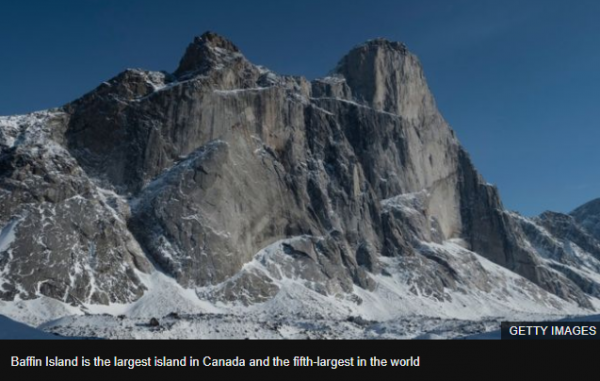

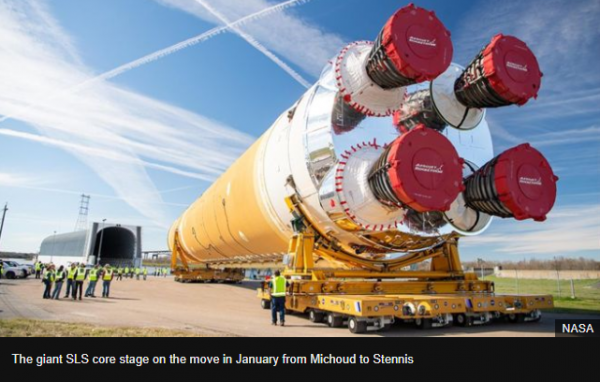


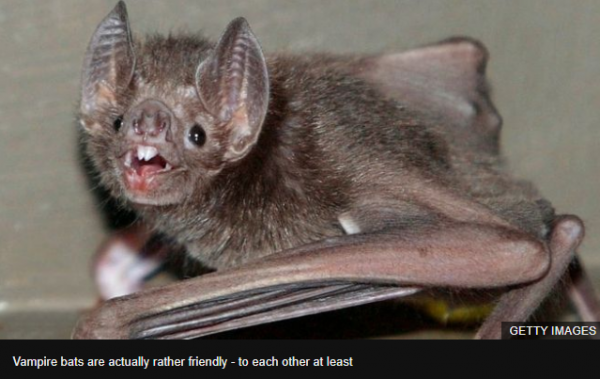


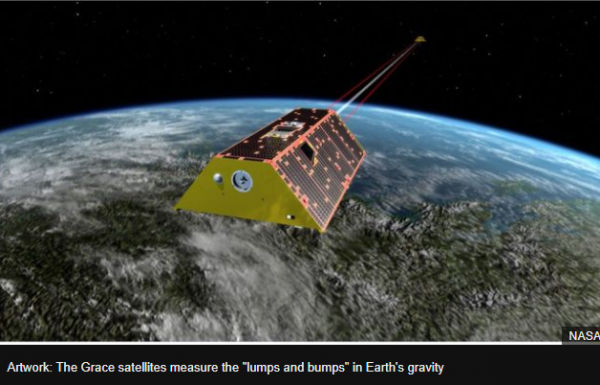
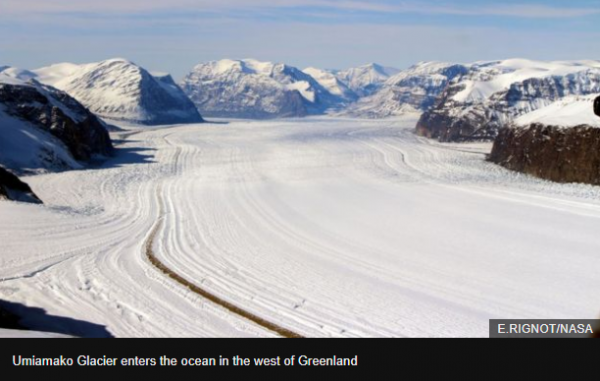
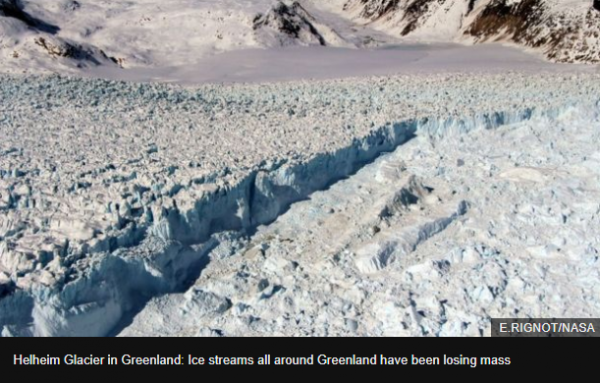




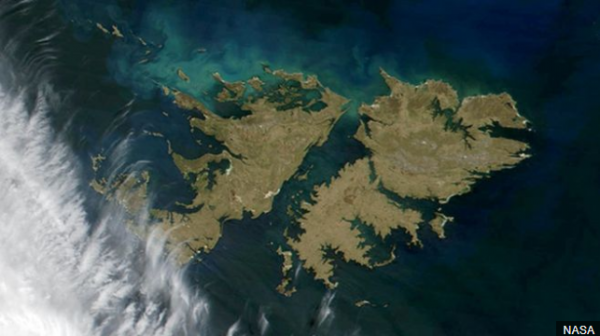
.png.0c4ddbd4c8b751f13c5da6f370455eaf.png)
